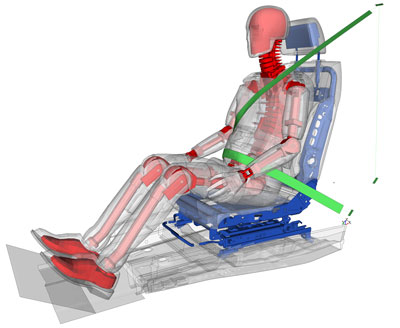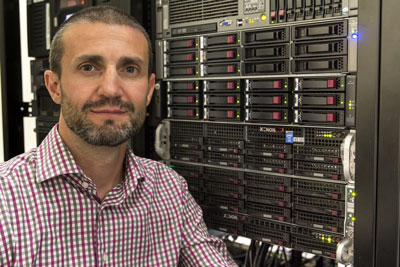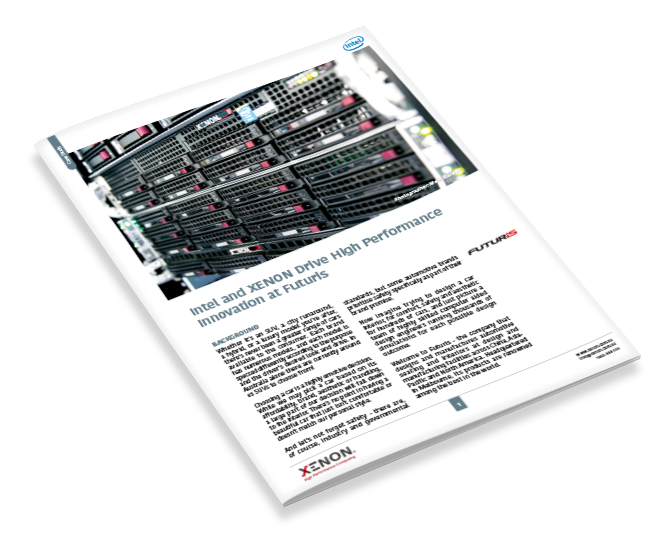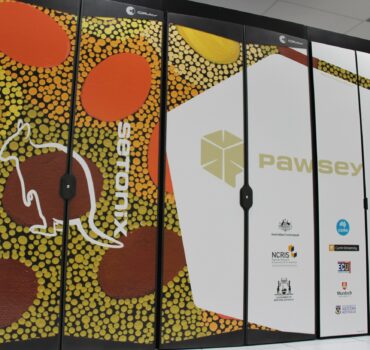Intel® and XENON Drive High Performance Innovation at Futuris
19 Jan 2015
Background
Whether it’s an SUV, a city runaround, a hybrid, or a luxury model you’re after, there’s never been a greater range of cars available to the consumer. Each brand has numerous models, and each model is designed and spec’d differently according to the purpose and the driver’s desired look and use. In Australia alone there are currently around 65 SUVs to choose from!
Choosing a car is a highly emotive decision. While we may pick a car based on its affordability, brand, aesthetic or handling, a large part of our decision will fall down to the interior. There’s no point in having a beautiful car that just isn’t comfortable or doesn’t match our personal style.
And let’s not forget safety – there are, of course, industry and governmental standards, but some automotive brands prioritise safety specifically as part of their brand promise.
Now imagine trying to design a car interior, for comfort, safety and aesthetic for hundreds of cars, and just picture a team of highly skilled computer aided design engineers running thousands of simulations for each possible design outcome.
Welcome to Futuris – the company that designs and manufactures automotive seating and interiors at design and manufacturing facilities across China, Asia-Pacific and North America. Headquartered in Melbourne, its products are renowned among the best in the world.
The Challenge
“Futuris has a reputation for high quality and innovation, and to support this, our team has challenging engineering goals. We engaged XENON and Intel® to support us as we weren’t just trying to keep ahead of industry, we wanted to push the design limits. To do that, we needed a high performance computing system that packed a punch – and that’s exactly what we’ve got now.“
Futuris Group
With so many car models around the world, the combination of design options is almost endless. There is also more focus than ever on interior detail relating to specific load cases, for example injury management such as whiplash, or customer comfort with foam fabrics over others.
Today’s global vehicle producers want design partners who are quick, innovative, reliable and responsive to change. They expect high quality and cost-competitive products and services all delivered from a flexible and proactive business partner.
Technology features heavily in enabling Futuris’ success, particularly for design simulation process efficiency, as it saves time and money upfront. The company uses software applications to simulate events for the development of seats and interiors.

Collaboration also plays a strong role in the company’s success, as Darren Flett, Senior CAE Engineer at Futuris, says, “Vehicle manufacturers don’t just hand us the design once it’s complete and ask us to deliver an interior, they engage us very early on. There’s a lot of communication and collaboration between OEMs and Futuris – we’re very tightly integrated. It’s our work inside their work, then their work overlaid again – and then repeat that many times.”
Last year, the business acknowledged that a combination of team growth, ageing architecture and code – consisting of standalone high-end workstations – were holding back job scheduling and efficient processing of simulations during one of its three engineering phases – analysis processing.
Recognising this, Futuris’ Port Melbourne Computer Aided Engineering Department – which acts as the global support team – sought a solution which would be even more responsive, effective and able to compute with greater efficiency.
Solution
Futuris went looking for a high performance computing solution and after careful review of international and local technology providers and consulting partners, it chose XENON Systems.
XENON presented a turnkey solution meaning it was completely pre-installed, pre-configured, tested before delivery.
The XENON solution is based on a Linux cluster architecture with a management and storage node and five compute nodes tied together by XENON’s customised cluster solution. All nodes leverage Intel’s Grantley platform with Haswell dual Intel® Xeon® E5-2667v3 processors. These processors were chosen for their high single core performance as well as their high throughput with 8 physical cores per CPU. The high speed Infiniband interconnect ties the cluster together into a high performance machine, which maximises the throughput and minimises the run time for the finite element simulations and model turn-around time for the engineers.
Once installed, XENON and Futuris then embarked on highly specialised integration of the Linux cluster into a Windows environment (users pre- and post-process their jobs on Windows workstations as normal and submit them from Windows workstations to the Linux cluster). Performance of the main application (LSDYNA) was then further improved using the local SSDs in each compute node, optimal choice of MPI libraries, optimised model decomposition/parallelisation and job configuration. This concluded with very specific integration based on Futuris’ business workflows all delivered within a four month timeframe.
As a Melbourne-based company, the convenience of being on hand proved invaluable and the teams worked together collaboratively.
 The XENON team worked with Senior CAE Engineer Darren Flett to seamlessly integrate the required business solution.
The XENON team worked with Senior CAE Engineer Darren Flett to seamlessly integrate the required business solution.Photographer: Marc Floreani
Darren Flett says, “we reviewed international solutions based overseas, but data transfer alone was costly and inefficient. We were actually somewhat hesitant about a turnkey solution given the highly specialised nature of our work, however, XENON’s business case and previous HPC projects re-assured us it was the best option for our requirements. It also came at lower cost and was faster to get up and running. We certainly didn’t go out looking for a Melbourne-based partner but the convenience is undeniable.”
Outcomes
The Futuris cluster is a turnkey HPC cluster solution containing various critical Intel® components which translates overall to a more streamlined simulation process with the following benefits:
- Intel® platform and processors enable a high performance system for finite element modeling (LS-DYNA)
- Futuris enjoys significant speed-up with Intel® Haswell processors and Grantley chipset compared to previously used workstations. Increasing the calculation speed of the finite element model runs by 65%, significantly reducing simulation time.
- This gain is further increased by the customisable job scheduler allowing system utilisation to be maximised.
- The solution is a highly efficient and cost-effective Linux-based system integrated into a Windows environment.
- It’s a turn-key solution: fully pre-tested, pre-installed, and pre-configured, which meant less disruption to the business.
- It was customised for the particular project; and,
- Was seamlessly integrated into Futuris’ workflow after installation, thus granting more flexibility for the future.
The system is highly secure and sits behind all the company’s security firewalls. Despite this, the engineering team still enjoys the exact same performance whether they’re in North America or Asia – the scheduling and processing experience is not compromised. A key learning included how sensitive the CAE application is to configuration. The two teams had built this in as part of the planning process initially, and during the integration part of the project this was reviewed in great detail to ensure no variation when the team cut over to the Intel® based XENON System.
Rapid solution times enable faster solution convergence, and feedback from Futuris’ automotive customers has been extremely positive.
“We are now pushing the boundaries of car seat design simulation and this puts us at the forefront of innovation in our field today. What’s more, the design is open for us to add extra modules and compute nodes, making the investment with Intel® and XENON extremely valuable,” concluded Darren Flett.
So, the next time you hop in the car for a carton of milk, or to drive to work, take a look at your car interior and notice the detail, as you can bet the team at Futuris certainly has.
Download the Futuris Case Study.
Talk to a Solutions Architect
 Download the XENON-Futuris Case Study
Download the XENON-Futuris Case Study

